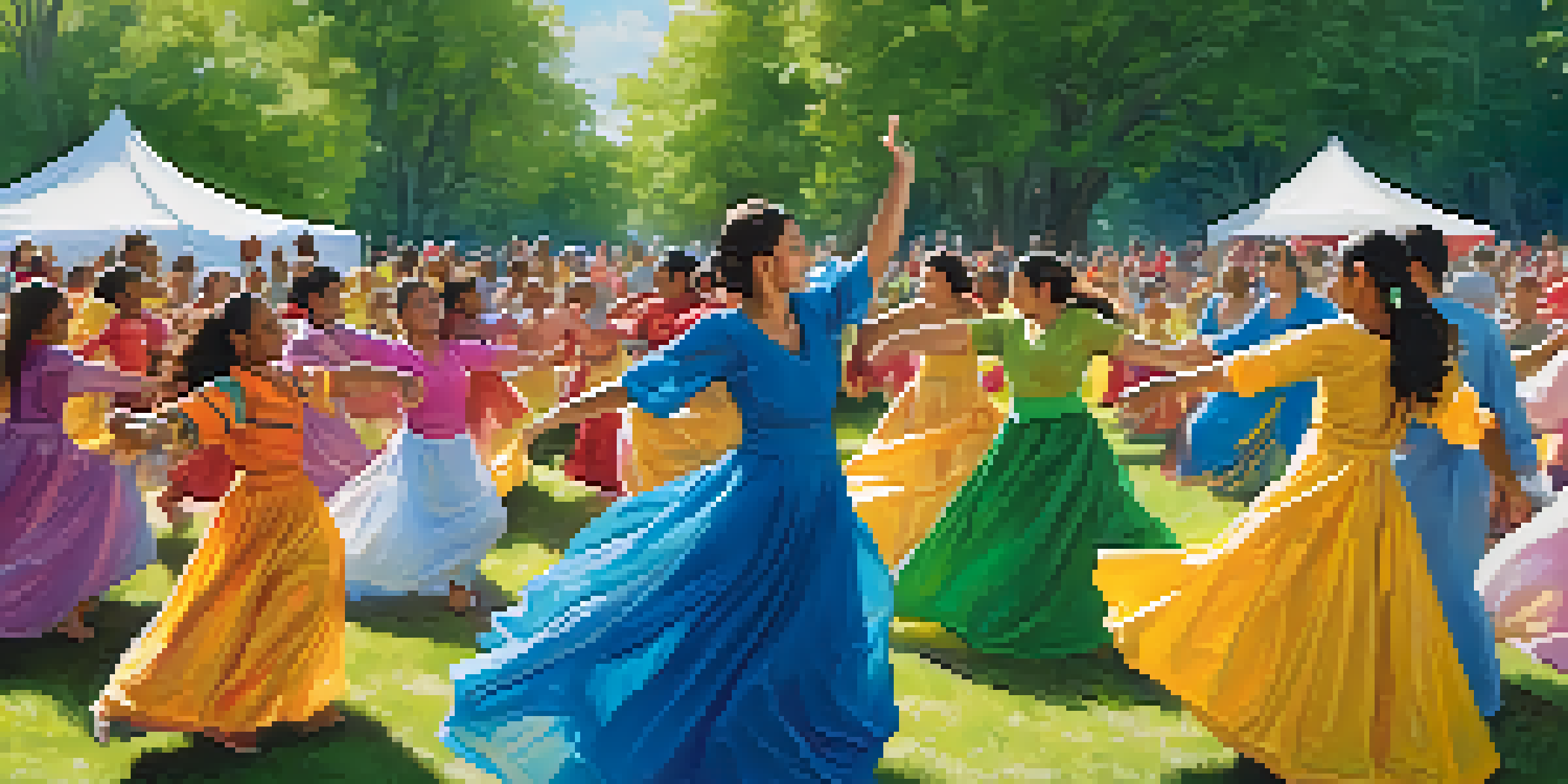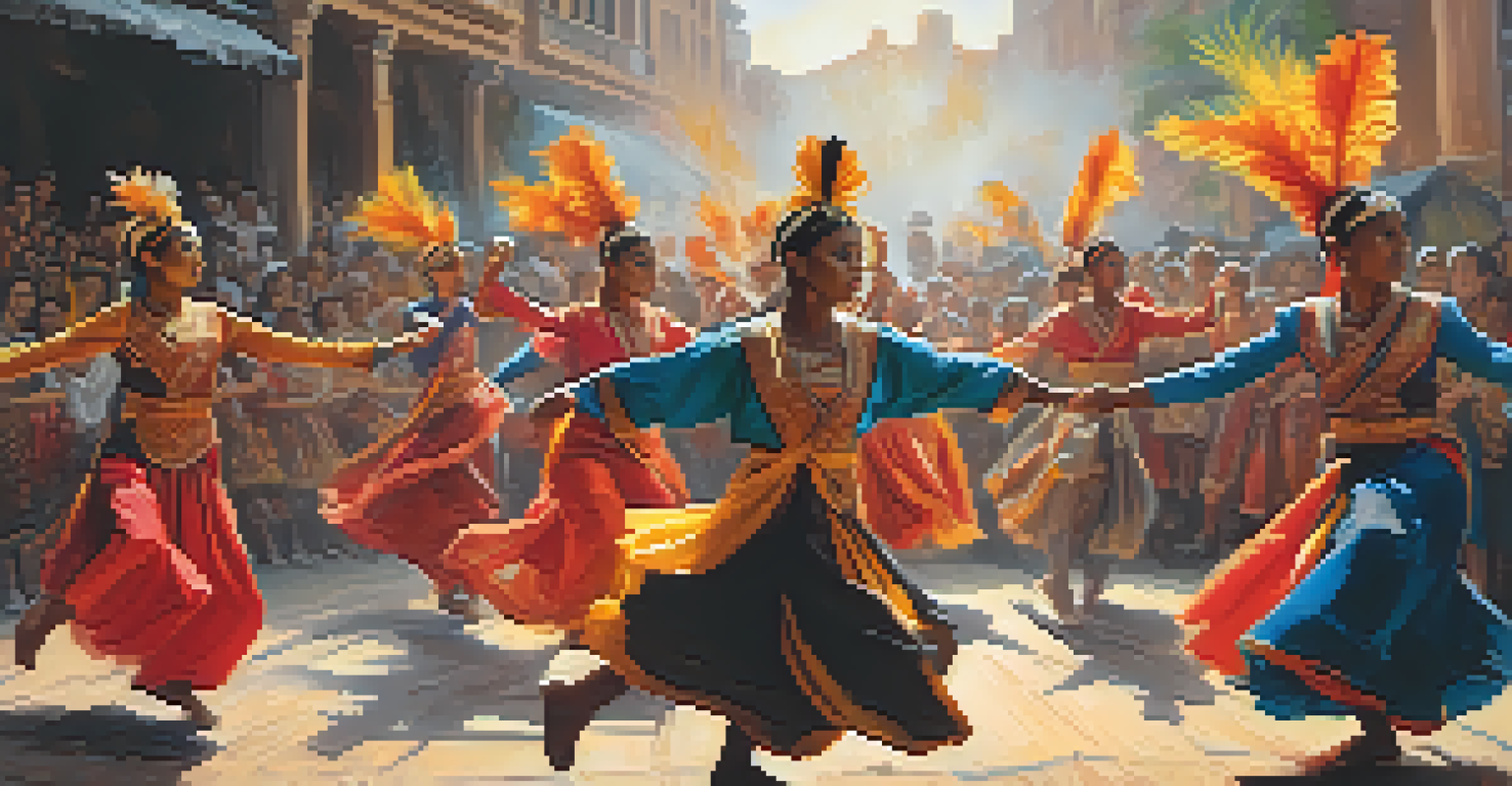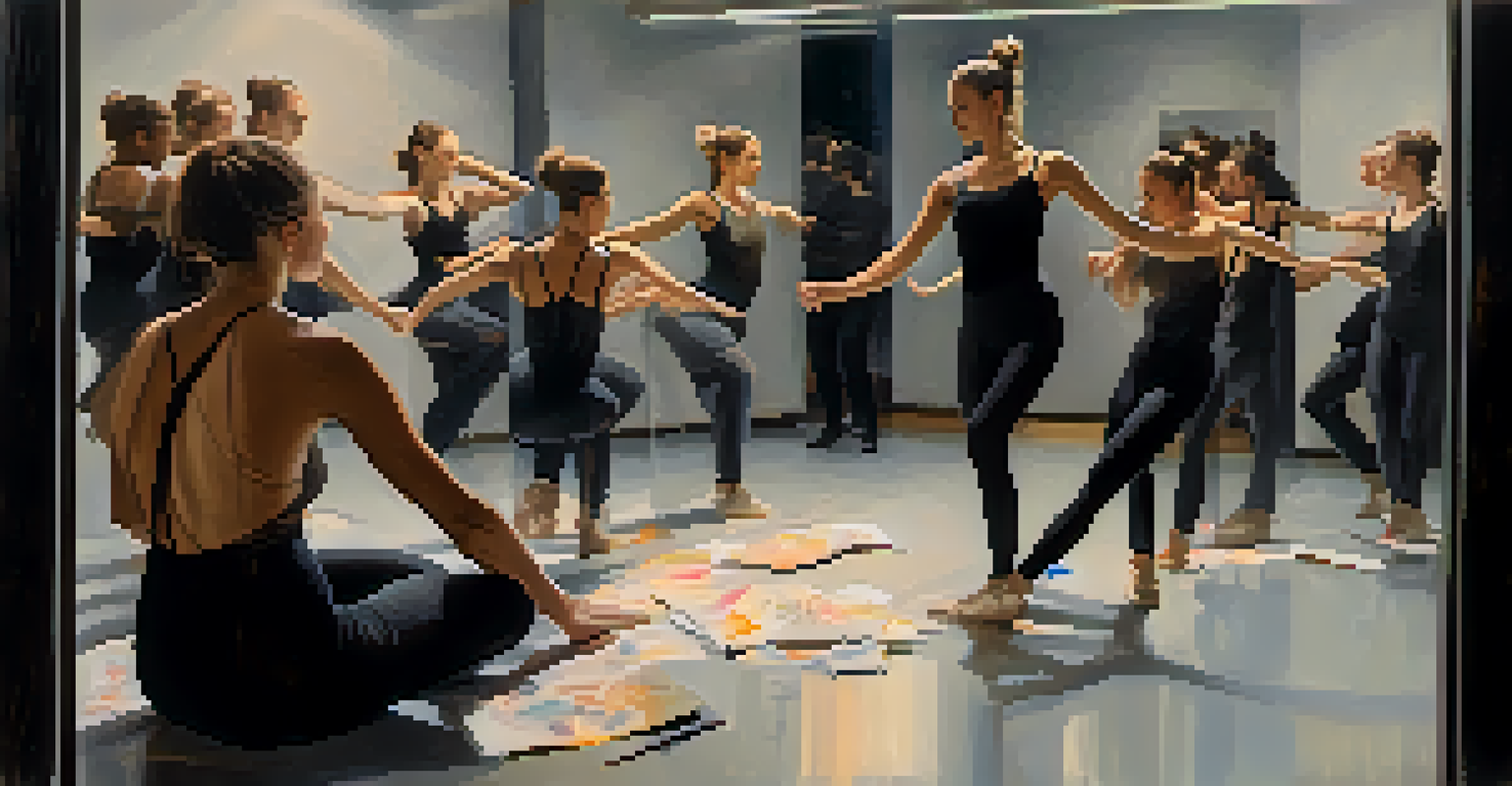Dance as a Tool for Social Change: Policy Implications

Understanding Dance as a Form of Expression
Dance, at its core, is a powerful means of expression that transcends language barriers. It allows individuals to convey emotions, stories, and cultural identities in ways that words often cannot. This art form can resonate deeply with audiences, making it an effective tool for raising awareness about social issues.
Dance is the hidden language of the soul.
When communities come together to dance, they foster a sense of belonging and collective identity. For instance, traditional dances often reflect the history and struggles of a community, creating a bridge between generations. By engaging in such practices, participants can highlight important social narratives that might otherwise go unheard.
Moreover, the physicality of dance can evoke strong emotional responses, making it a compelling method for activism. Whether it's through flash mobs or choreographed performances, dance can captivate attention and inspire action, urging society to confront pressing issues head-on.
Historical Examples of Dance in Social Movements
Throughout history, dance has played a significant role in various social movements. For example, during the civil rights movement in the United States, dance was used to express solidarity and resistance. The iconic 'Freedom Dance' symbolized hope and resilience, uniting people in a shared fight for justice.

Another notable instance is the use of dance in the anti-apartheid movement in South Africa. The vibrant rhythms and movements of traditional dances became a symbol of resistance against oppression, fostering unity and determination among activists. Such examples illustrate how dance can serve as a rallying point for change.
Dance as Expression and Activism
Dance transcends language, serving as a powerful tool for expressing emotions and raising awareness about social issues.
These historical contexts demonstrate that dance is not just an art form; it’s a powerful tool for social commentary. By harnessing the energy and passion inherent in dance, movements can amplify their messages and create a lasting impact on society.
The Role of Dance in Community Engagement
Dance can significantly enhance community engagement by bringing people together in a shared experience. Community dance programs often encourage participation from diverse groups, fostering inclusivity and dialogue. This engagement can lead to a stronger sense of community identity and purpose.
Art can change the world because it can change people.
For instance, local dance workshops can address social issues like migration, gender equality, or mental health. By using dance as a medium for discussion, participants can explore these topics in a supportive environment. This not only raises awareness but also empowers individuals to take action within their communities.
Furthermore, engaging in dance can boost mental health and well-being, creating a positive feedback loop. As individuals find joy and connection through movement, they become more inclined to participate in social change initiatives, ultimately strengthening their community bonds.
Dance as a Tool for Policy Advocacy
Dance can influence policy by serving as a powerful advocacy tool. When performances are used to highlight social issues, they can attract media attention and engage policymakers. This visibility can prompt discussions around necessary legislative changes, leading to more inclusive policies.
For instance, choreographers and dancers have collaborated with NGOs to create performances that address issues like climate change or poverty. These performances not only entertain but also educate audiences about urgent matters, making the case for policy reform in an engaging way. Such creative approaches can resonate more profoundly with policymakers.
Community Engagement Through Dance
Dance fosters inclusivity and dialogue within communities, empowering individuals to address social issues and strengthen bonds.
Moreover, as dance continues to evolve, its potential for advocacy becomes even more significant. By integrating dance into campaigns, activists can reach broader audiences and inspire them to join the cause, thereby amplifying their impact on policy discussions.
Challenges Faced in Leveraging Dance for Change
While dance holds immense potential for social change, there are challenges that must be addressed. One significant barrier is the perception of dance as merely entertainment, which can undermine its value as a tool for activism. Changing this narrative requires concerted efforts from artists, advocates, and communities.
Additionally, funding and resources for dance initiatives can be limited, particularly in marginalized communities. Without adequate support, many impactful projects may struggle to gain traction or reach their intended audiences. This financial barrier can hinder the development of dance as a consistent advocacy tool.
Furthermore, the diverse interpretations of dance across cultures can lead to misunderstandings or misrepresentation. It’s crucial for artists and activists to navigate these complexities thoughtfully, ensuring that the messages conveyed through dance are authentic and respectful of the cultures they represent.
Collaborative Efforts Between Artists and Policymakers
Collaboration between artists and policymakers can enhance the effectiveness of dance as a tool for social change. When both parties come together, they can create informed, impactful initiatives that utilize dance to address pressing societal issues. This partnership can lead to innovative approaches that resonate with communities.
For example, some cities have initiated programs that incorporate dance into public health campaigns, addressing issues like obesity or mental health awareness. By combining artistic expression with policy goals, these initiatives can foster community participation while effectively conveying important messages.
Collaboration for Social Change
Partnerships between artists and policymakers enhance the impact of dance in advocacy, creating innovative initiatives that resonate with communities.
Such collaborations also allow for the sharing of resources and knowledge, ultimately leading to more sustainable projects. By recognizing the value of dance in policy discussions, both artists and policymakers can work together to create meaningful change that resonates in society.
Future Directions for Dance and Social Change
As we look towards the future, the intersection of dance and social change continues to evolve. Emerging technologies and social media platforms are creating new avenues for dance advocacy, allowing movements to reach wider audiences. This digital landscape presents exciting opportunities for creative expression and community building.
Moreover, the increasing recognition of the arts in policy discussions underscores the importance of integrating dance into social initiatives. Educational programs that emphasize the role of dance in activism can empower future generations to use this medium for social change, ensuring its legacy continues.

Lastly, fostering a culture that values artistic expression as a catalyst for change can transform societal perspectives. By promoting dance as an essential component of advocacy, we can pave the way for more inclusive, empathetic, and socially aware communities.